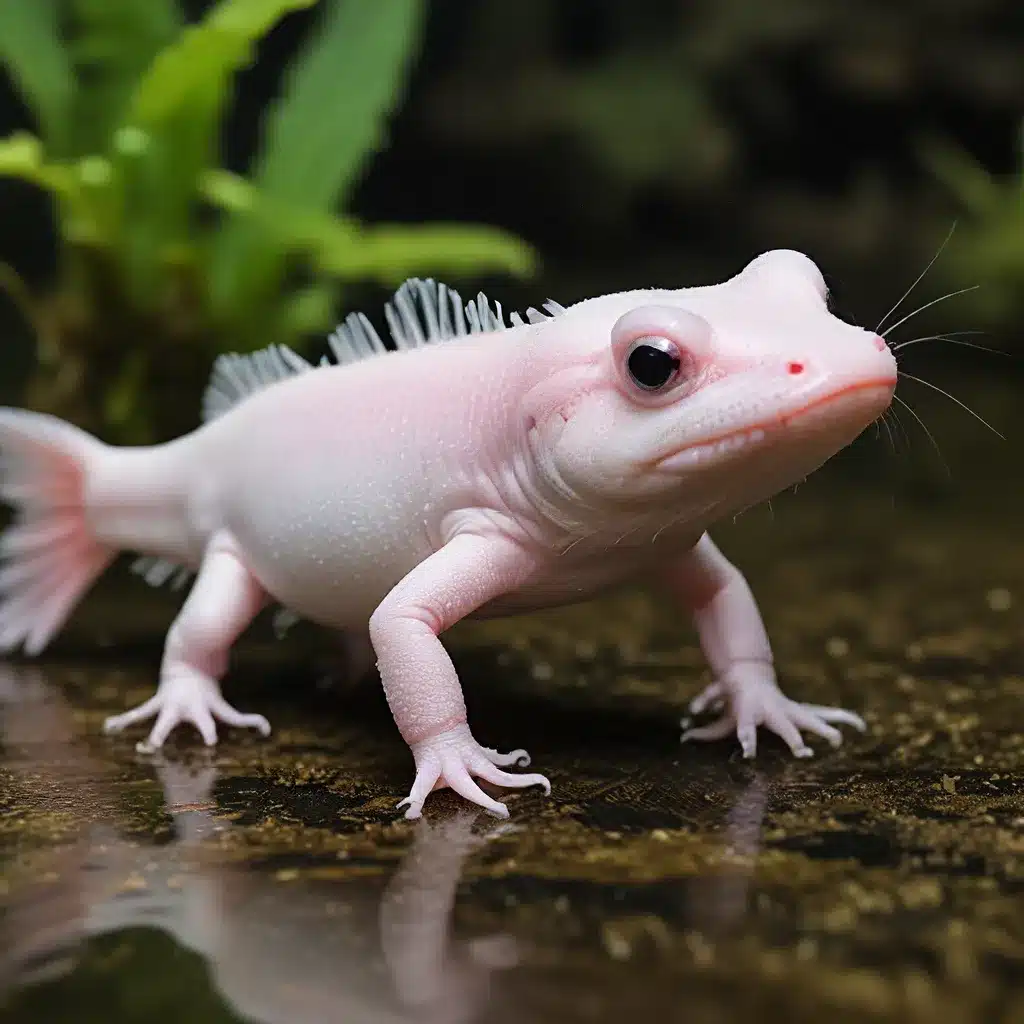
The Enchanting Enigma of the Axolotl
In the lush waters of Mexico’s Xochimilco canals resides a creature so unique and fascinating that it has captured the attention of scientists and nature enthusiasts alike – the axolotl. With its endearing smile, feathery gills, and captivating regenerative abilities, this enigmatic amphibian has become an icon of the natural world.
Join me as we embark on a journey to explore the peculiarities and wonders of the axolotl, delving into its biology, adaptations, and the ongoing efforts to protect this remarkable species. As we peel back the layers of this extraordinary creature, prepare to be enthralled by its captivating existence.
The Axolotl’s Fascinating Features
What truly sets the axolotl apart is its extraordinary regenerative capabilities. Unlike humans and many other animals, axolotls possess an astonishing ability to regrow lost body parts, including limbs, spinal cord tissue, and even parts of their heart and brain. This remarkable regenerative capacity has fascinated scientists for decades, as they seek to unlock the secrets of the axolotl’s regenerative prowess for potential applications in human medicine.
But the axolotl’s captivating nature extends far beyond its regenerative abilities. This amphibian’s unique adaptation to its aquatic habitat is also a sight to behold. With their feathery external gills and fully webbed feet, axolotls are perfectly suited for a life spent predominantly in water. They navigate their watery homes with grace, using their long, slender bodies and undulating tails to move through the depths.
Neoteny: The Axolotl’s Enduring Youth
Perhaps the most striking feature of the axolotl is its ability to retain its juvenile form throughout its entire life. Unlike most amphibians that undergo metamorphosis, the axolotl remains in a larval state, exhibiting remarkable neoteny. This means that it retains its gills, fins, and aquatic lifestyle even as it matures into adulthood.
Imagine a creature that never truly grows up, forever maintaining the enchanting appearance of a baby salamander. This extraordinary life cycle sets the axolotl apart as a remarkable anomaly in the animal kingdom. It’s as if nature has frozen this unique amphibian in time, allowing us to witness the captivating wonder of its perpetual youth.
A Habitat in Peril
As we explore the axolotl’s natural habitat, we discover that this extraordinary species faces numerous challenges to its survival. Habitat loss, pollution, and the introduction of non-native species pose significant threats to the delicate ecosystem of the Xochimilco canals. Once teeming with axolotls, these waterways have suffered from the impacts of urbanization and agricultural practices, leading to a decline in the axolotl population.
Efforts are now underway to protect and restore the axolotl’s habitat, as well as establish captive breeding programs to ensure the species’ survival for future generations. The axolotl’s captivating appearance and regenerative abilities have endeared it to many, but its ecological significance is what truly makes it a vital part of our planet’s biodiversity.
Unlocking the Secrets of Regeneration
While the axolotl’s enchanting allure has transcended the realms of science, its scientific value is immense. Researchers are studying the axolotl’s unique genes, molecular mechanisms, and cellular processes in the hopes of uncovering the secrets behind its regenerative powers. By understanding the axolotl’s biological processes, scientists aim to unlock new avenues for regenerative medicine and potentially revolutionize human healthcare.
Imagine a world where lost limbs or damaged organs could be regrown, as easily as an axolotl regenerates its own body parts. The axolotl’s story is one of resilience, beauty, and the boundless potential of nature’s most fascinating creations. As we continue to unravel the enigmatic nature of this remarkable creature, let us also recognize the importance of safeguarding its habitat and promoting conservation efforts to ensure the long-term survival of the axolotl.
The Axolotl: An Ambassador for Conservation
The axolotl has become a beloved ambassador for conservation and education, with organizations and individuals advocating for its protection and raising awareness about its ecological significance. This captivating amphibian serves as a powerful reminder of the delicate balance of nature and the importance of preserving the unique biodiversity of our planet.
By championing the cause of the axolotl, we not only secure the future of this extraordinary species but also inspire a greater appreciation for the wonders of the natural world. As we continue to unravel the mysteries of the elusive axolotl, let us also remember the crucial role it plays in the intricate tapestry of life on Earth.
Conclusion: Embracing the Axolotl’s Endless Potential
The axolotl stands as a testament to the boundless potential of nature’s most fascinating creations. Its neotenic form, regenerative abilities, and specialized adaptations make it a truly unique and captivating creature. As we delve deeper into the enigmatic nature of the axolotl, let us also recognize the importance of safeguarding its habitat and promoting conservation efforts to ensure its long-term survival.
The axolotl’s story is one of resilience, beauty, and the endless possibilities that lie within the natural world. By championing the cause of this remarkable amphibian, we not only secure its future but also inspire a greater appreciation for the marvels that still await us in the natural world. So, let us continue to explore and unravel the mysteries of the elusive axolotl, and in doing so, unlock the secrets that may one day transform the face of human healthcare and conservation.
Remember, you can always visit GoldenExoticPets.com to learn more about the axolotl and other fascinating exotic pets. Who knows, you might just be inspired to bring home your own piece of living history!

